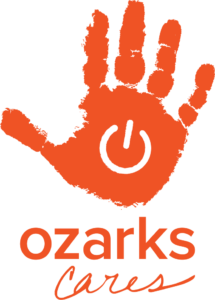 By: Casey Hollins, Rappahannock Electric Cooperative
By: Casey Hollins, Rappahannock Electric Cooperative
In 2015 the communications team at Ozarks Electric Cooperative (OEC) began Ozarks Cares initiatives. This effort encouraged employees to volunteer and participate in more community events than ever before. Did it make a difference? Ozarks staff members say – yes, it did!
“Our goal was to build a company presence in the communities we serve by donating time, goods and services to various philanthropic endeavors,” said Mitchell Styles, community outreach and education coordinator at OEC. “What makes the Ozarks Cares program successful is that we let the employees choose what they want to participate in. They can turn in participation forms for any community service as long as it serves a community in Ozarks Electric service territory.”
Through the Ozarks Cares program, employees can earn up to eight hours of extra paid time off by participating in community outreach projects throughout the year. Last year their employees volunteered 1,620 hours of their own time to community service.
“We listened to what our employees wanted,” added Styles. “They wanted to have more of a say where their money went and feel more included on the decision making. That is why we switched from the United Way Campaign to the Ozarks Cares Campaign. They get to nominate nonprofit organizations, and we let the employees vote on which organization they want to help. The committee that oversees the donations is also made up of employees.”
Employees’ volunteering in their communities is not the only advantage of the program. Before Ozarks Cares started there were only two employees handling all of the cooperative’s community outreach. Now almost all of the OEC employees are participating.
“This is the first year of the Ozarks Cares Campaign, and it has been extremely successful,” Styles explained. “Our past 13-year-average for employee contributions for our United Way campaign was $10,680 per year. After changing our campaign, this year we have raised $19,355 from employee contributions alone. That is an 81 percent increase from our previous average.”
